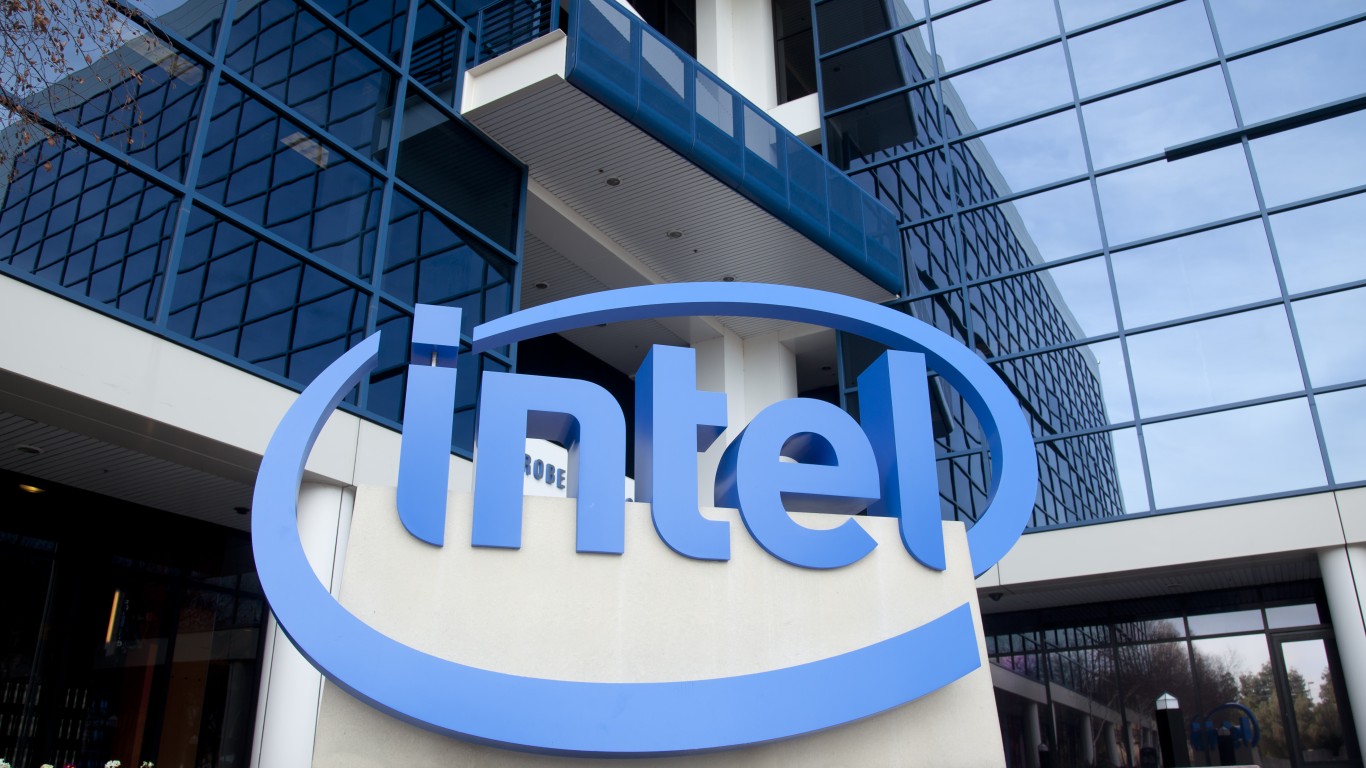
Long after U.S. markets closed Monday afternoon, Apple Inc. (NASDAQ: AAPL) announced three new M3 chips. The chips are destined for installation in the company’s latest MacBook laptops.
Later in a busy week, Apple will also report fourth fiscal quarter earnings after markets close Thursday afternoon. More about that later.
Apple’s M3

Because there are so many analysts and fanboys poking around in Apple’s business, the specifications of the three chips were no big surprise. The new chips were produced using designs developed with Arm Holdings plc (NYSE: ARM) and 3-nanometer manufacturing equipment from ASML Holding NV (NASDAQ: ASML) at Taiwan Semiconductor Manufacturing Co. Ltd. (NYSE: TSM). That combination is also responsible for the latest iPhone chip, the A17.
Here are the 3 variations of the M3:
- Base M3: 8 CPU cores and 10 graphics (GPU) cores
- M3 Pro: 12 CPU cores and 18 GPU cores
- M3 Max: 16 CPU cores and 32 or 40 GPU cores
Apple will not offer a 13-inch MacBook Pro with the M3 processor. The starting point is a 14-inch MacBook Pro with the base M3 chip. The larger 14- and 16-inch MacBook Pro models include the M3 Pro or M3 Max versions of the chip.
Other versions of the M3, called M3 Ultra and M3 Extreme, have been the subject of some chatter, but no official word from Apple. Both are candidates to power the Mac Pro and Mac Studio desktop computers.
What is a nanometer, and who cares?

A nanometer (nm) is one billionth of a meter, or roughly 1/100,000th the thickness of a human hair. Small is both more energy efficient and faster. Compared to a chip built using a 5-nm, a 3-nm chip cuts power consumption by about 45% and boosts performance by nearly a quarter, all in less space. The second generation of 3-nm chips is expected to cut power consumption by 50%, improve performance by 30%, and slim down by 35%.
There are several reasons to care about this. First, lower power consumption means less heat generation, reducing costs for parts to cool the machine. Another is that cramming more cores on a single chip means shorter travel times and faster communications between more cores. A third is that lower power consumption translates into longer battery life.
Meet the competition

A couple of Apple’s rivals in the desktop/laptop space are familiar. Intel Corp. (NASDAQ: INTC) and Advanced Micro Devices Inc. (NASDAQ: AMD) are both developing new high-end PC chips. New entrants include Nvidia Corp. (NASDAQ: NVDA) and Qualcomm Inc. (NASDAQ: QCOM). Of the four, only Intel is following its own technology path. The others, including Apple, will be using a chip architecture that relies on Arm’s technology.
Apple’s new M3 chip marries maximum throughput speed, fast access to a vast amount of memory, and a “Neural Engine [that] is up to 60 percent faster than in the M1 family of chips” … “while making AI/ML workflows even faster.”
Technology writer Om Malik acknowledges the competition, but isn’t swayed:
“Notable as these developments are, they all lack Apple’s big advantage: its vertically integrated platform that allows the company to squeeze more performance and efficiency out of its chips. Its ability to understand the usage behavior of its hardware platform makes Apple’s advantages even more impactful.”
Get out your wallets

Monday’s announcement of the M3 family of chips came about a week before the new MacBooks and iMac will be available. All except the 14- and 16-inch MacBooks with the M3 Max chip are set for shipment on November 7. The company is taking preorders now.
The 14-inch MacBook Pro with M3 starts at $1,599, the 14‑inch MacBook Pro with M3 Pro starts at $1,999, and the 16‑inch MacBook Pro starts at $2,499. Apple offers education discounts on all models.
Apple’s earnings

When Apple reports its fiscal 2023 fourth-quarter results late Thursday, analysts expect the company to report $89.4 billion in revenue and $21.39 in earnings per share. Those numbers reflect improvements of 9.3% and 10.5%, respectively, compared with the previous quarter. Year over year, the quarterly revenue forecast is 0.8% lower, and the quarterly EPS forecast is 7.8% higher. The full-year estimates call for EPS down 0.6% and revenue down 2.8% compared to fiscal 2022 results.
Apple’s consensus 12-month price target is almost $198, implying a potential gain of 16.5%. The company’s total return for the past 12 months is 9.97%, including an annual dividend of $0.93 per share.
At the end of the previous quarter, Apple reported cash and other short-term assets of $68.5 billion, about 20% of the company’s total assets of $335.04 billion. The company’s market cap is $2.66 trillion.
Apple’s announcement hasn’t had much impact on its share price in premarket trading Tuesday morning. Shares traded down about 0.12% at $170.08, in a 52-week range of $124.17 to $198.23. The stock closed up 1.23% on Monday, with nearly 51 million shares traded.
Thank you for reading! Have some feedback for us?
Contact the 24/7 Wall St. editorial team.



